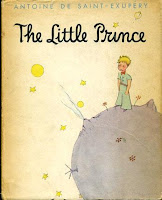Setting up your sketch box and starting a painting on location can at times be overwhelming. Sorting through all of nature’s complexities and distilling that information down to its basic elements is no easy task. When confronted by the natural world, at times it seems we are trying to bring order to chaos? Even once we have the forms and masses blocked in we still must decide on how much pictorial detail (what to put in, what to take out) we need to include to convey the scene and intention of the piece.
The best advice to simplify your subject is to see it as uncomplicated complete patterns of shape, massing in shapes like puzzle pieces and eliminating unnecessary details. This is certainly a well founded and conventional approach. But only as long as we keep the intention of the scene and see the patterns of the whole. So no matter how simple we begin we are always involved with composition. And to simplify composition we need to understand its elements.
If a really great painting is more about what we leave out than put in, we need to know what those things are that we left out.
The Elements of Art: -Form-Line- Shape-Color-Texture-Space-Value
The Principles of Design: -Emphasis-Balance-Harmony-Variety-Movement-Rhythm-Proportion-Contrast-Unity.
The organization of these fundamentals forms composition. Composition is the organization of related elements into a meaningful coherent whole.
The word composition means put together – “com” is together – “ponere” means put.
So it is the “act” of composing or compounding. The mechanics of composing can be analyzed by these formal fundamentals separately however these elements become interrelated and dependent upon the other.
So it is important to appreciate them individually and but more importantly
understand them when acting together.
This idea is beautifully and simply express by a great Greek philosopher.
“The whole is more than the sum of its parts.” Aristotle
They are tools that will be used over and over and need to be embedded in a students mind so that they can become instinctive and non cognitive.
"A painter needs to study, meditate and experiment and practice interminably in order to produce a painting that would have nobility in its concept, variety, rhythm, repetition, unity, balance and harmony in its composition"
-- ( Edgar A. Payne )
"There can be no dissent from the maxim, that a knowledge of integral parts is essential for the construction of a whole - that the alphabet must be understood before learning to spell, and the meaning of words before being able to read"
--From Asher B. Durand's 1855 Letters on Landscape Painting
Learning to see the whole.
Select a great work of art you truly admire and critique it by basic design fundamentals.
One can quickly pick out the artists use of elements and principles, and still not find what exactly gives that particular work its excellence or intrinsic appeal. (Elegance and beauty). There is an inherent quality in great masterpieces that defy/challenge technical analysis or description. To see the aesthetic value, we often have to look for what is not there. This leads to the second aspect of composition, which is more intuitive and based on our feelings or sense towards the subject, “Expression”, which we must consider an element of composition, no matter how elusive or hard it may be to describe. Is the most powerful and lasting element in art. It can make contact with our senses, emotion and intellect.
 L'essentiel est invisible pour les yeux.
L'essentiel est invisible pour les yeux.("One sees clearly only with the heart. The essential is invisible to the eyes.")
The Little Prince by Antoine de Saint-Exupéry
This intrinsic appeal or quality transcends fundamentals for they have become second nature to a master painter. It is a deep bedded artistic language requiring no more effort on their part than breathing. What we must emulate is the intellectual process, making fundamentals an innate part of our daily thinking and artistic vocabulary.
“A main objective in the art of painting is to disguise, insofar as possible, the use of methods or the influence of principles.
This concealment creates, so to speak, a great mystery – an attractiveness, unseen and indescribable. This abstract quality is the element that places pictorial work in the realm of fine art.”
- - (Edgar A. Payne)
I started this article wanting to talk about learning to simplify. So how did an article about understanding the essentials evolve into such large topics as the elements of art, principles of design, Aristotle, Gestalt theory and intrinsic appeal?
A well composed painting is a complex thought process of simplification.
Simplification “is” composition. To create compositions we must understand elements of art intrinsically. So that we can remove them at will creatively and inventively.
Great composition is more a matter of what you leave out than what you put in.
Explore - Question - Learn - Enjoy, Jim
Edgar Payne Gallery
Composition of Outdoor Painting by Edgar A. Payne
Asher B. Durand - biography
Current Durand Exhibition / Madrid
Kindred Spirits - Asher Durand and the American Landscape
Credits:
Statue of Aristotle at the university of Freiburg im Breisgau, Germany.
By Cipri Adolf Bermann (1862–1942)
Photo: Michael Schmalenstroer
Mr. Payne and Mr. Durand and Mr. Aristotle and Mr. Saint-Exupéry


